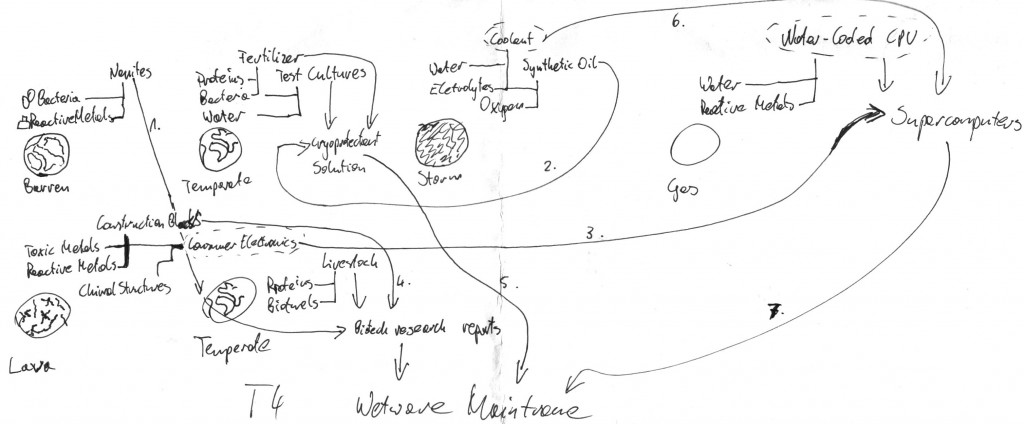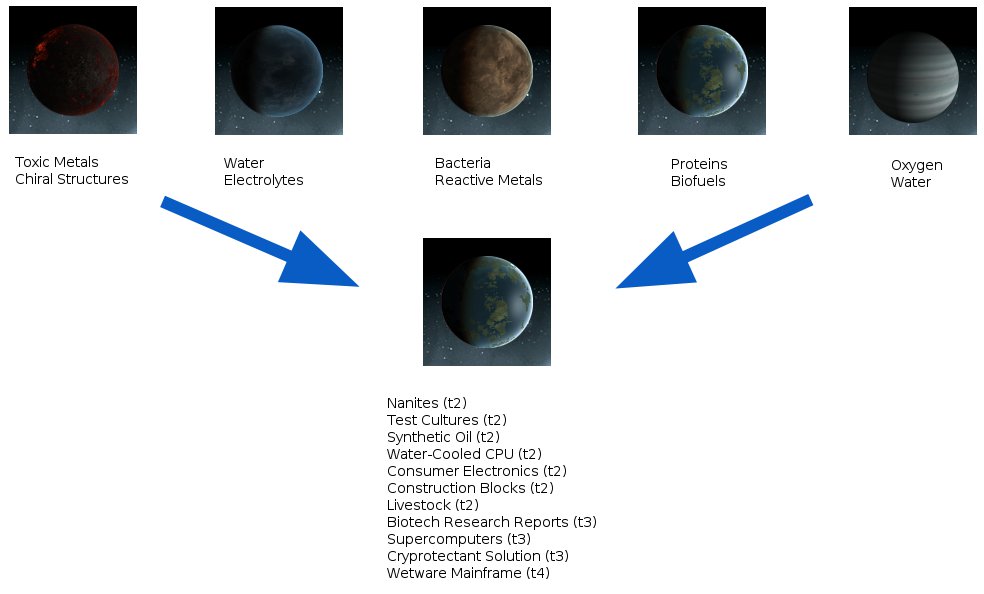 Back in Tyrannis I have started my adventure with Planetary Interaction the moment it was introduced on the test server, way before it was released to Tranquility. Even though PI in its initial version was a clickfest (one had to manually set each extractor on each planet), I have started off with a Tier 4 product: the Wetware Mainframe.
Back in Tyrannis I have started my adventure with Planetary Interaction the moment it was introduced on the test server, way before it was released to Tranquility. Even though PI in its initial version was a clickfest (one had to manually set each extractor on each planet), I have started off with a Tier 4 product: the Wetware Mainframe.
Some time has passed and I have switched from actively playing EVE to my current semi-AFK mode. I have decided that moving stuff between colonies takes too much time, and scrapped everything on my planets. I have started making the POS fuel products instead, namely Coolant, Mechanical Parts and Robotics. The income wasn’t bad, so I’ve sticked with that for a while.
Wetware Mainframe however sells for more than it used to when I was making it. Gratned, the costs of PI have increased (unless you have the ability to put your own Customs Office up – and defend it), but the profit margin still looks healthy.
Say hello to my new setup:
The drawing is not the most beautiful piece of art on the internet, but it clearly explains all the connections between each planet. This is still far from optimized though; extraction of multiple materials from the same planet and processing them on site results in a reduced output, but it’s the drawback of having an end-to-end product line. With maxed skills player can only have up to six colonies, which forces either an end-to-end approach, or optimized one-stage process, that requires a lot of maintenance, produces more goods in the same timeframe, but relies on market supply. It is also possible for several people to team up and make one type of t1/t2 products which another player/character converts into t3 and t4 products.
Optimization of end-to-end approach
When you look at the diagram above, you will notice 7 arrows. Each of them represents a type of material that needs to be moved from one planet to the next. Each export and each import of materials also means that taxes need to be paid. Crucible brought the player-owned Customs Offices and dramatically increased taxes on NPC CO. To minimize the amount of ISK venting through this sink, we need to optimize the process.
The simplest possible optimization is to divide colonies to extractors and processor: 5 colonies extract materials and make tier 1 products, which are then exported and moved to the sixth colony with processors, that makes all intermediate t2 and t3 products required by the t4 process. This reduces the diagram to 5 “arrows”:
This approach reduces the amount of trips made between planets. I am not entirely convinced, that this is the best approach, because t2 and t3 materials “compress” their ingredients. Less m3 of course means less taxes as well.
Of course it is possible to set up all six planets like the last one, but as I have written above – this causes dependency on market supplies.
The results are in!
Three days of production yield the following amount of ISK:
13 Wetware Mainframes, selling for 1 400 000 ISK each make a total of 18 200 000 ISK
We have to subtract 6 647 850 ISK in PI taxes (hi-sec), which gives a net profit of 11 552 150 ISK. This translates to about 115M ISK monthly. This amount increaes greatly (at least to 180M ISK a month) when using own Customs Offices in low sec or nullsec (and WH space), not to mention greater abundance of resources in the latter. Right now Wormhole Space looks most promising for players interested in Planetary Interaction.



